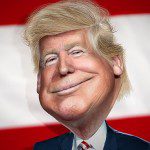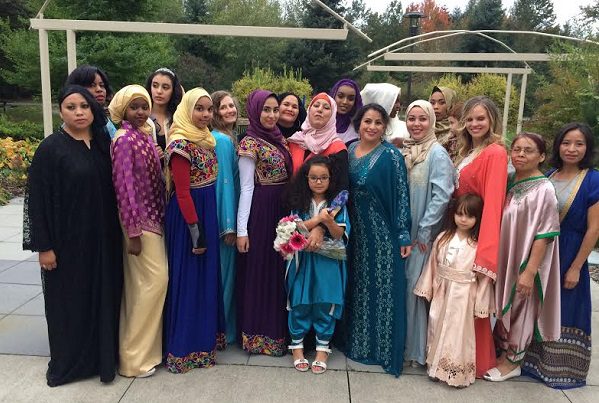 |
|
The versatile scarf
|
The keffiyeh – a traditional headdress for Arab men – recently came under intense public scrutiny after chef Rachael Ray was seen wearing a similarly colored paisley print scarf in an online advertisement for the U.S. chain Dunkin’ Donuts.The advertisement was pulled last week after the company received complaints that seem to have originated with the comments of conservative blogger and author Michelle Malkin. Malkin referred to the keffiyeh as “a regular adornment of Muslim terrorists appearing in beheading and hostage-taking videos,” whose use as a fashion statement leads to “the mainstreaming of violence.” She further equated the de-stigmatizing of the keffiyeh by fashion designers with “modified Klan-style hoods in Burberry plaid as the next big thing.”
Dunkin’ Donuts retracted the ad, issuing a statement that acknowledged “the possibility of misperception” with regard to the scarf – which, incidentally, was silk and had a fringe unique to fashion, rather than political, statements, as it never was a keffiyeh in the first place.
Malkin’s irresponsibility in her handling of the “keffiyeh kerfuffle,” as she terms it, is grave. Not only is the white hood of the Ku Klux Klan the very symbol of Klan ideology, but its use at the peak of Klan activity was never utilitarian. Furthermore, the recent induction of the keffiyeh into the American fashion scene is neither new nor unusual, as its many variations have floated the thin line between “in” and “passé” for decades.
So what’s behind this controversial fashion item? The keffiyeh is a square of cloth that’s folded around the head in various ways and usually provides protection from sun exposure and desert winds and sand. Originally, it was used as a form of Bedouin tribal identification and tradition, and it continues to be worn as such in rural areas. Agrarian workers, too, tend to wear keffiyehs for their functional nature.
It’s interesting to note that in the 1920s, when Arabs were part of the Allied Forces in World War I, the west began to “exoticize” the Middle East; the keffiyeh was arguably the most conspicuous indication of Orientalism during this time and its easy slip into the fashion world is probably still due at least in part to the air of danger and exoticism surrounding it. It was also adopted by British soldiers during World War II, after which its utility made it an essential part of the wardrobes of not only European forces, but Australian and, indeed, American troops in the Middle East. For the most part, soldiers wear the keffiyeh folded into a triangle to cover the mouth and nose and call it a “shemagh” when worn this way.
Because of the keffiyeh’s tribal and rural associations, it became a symbol of Palestinian nationalism in the 1930s and ’40s, and then resurfaced as a popular symbol in the 1960s. Yasser Arafat wore his black-and-white checkered keffiyeh in the shape of the Palestinian territory. Note that Arafat’s manner of wearing the keffiyeh has not been emulated by any other Palestinian leaders, and remains unique to his interpretation of the keffiyeh as a symbol of Palestinian solidarity. Similarly, Leila Khaled, a female member of the Popular Front for the Liberation of Palestine, wears her keffiyeh like a hijab – odd, because the keffiyeh is traditionallya form of masculinity. Nevertheless, her political statement, like Arafat’s, is a personal and unique rendition of the traditional cloth.
In the last thirty or so years, Westerners who wear the keffiyeh have done so for at least one of two reasons: to show sympathy for the Palestinian cause (and more recently the anti-war cause); or simply because it looks kind of hip slung around the neck, Rachael Ray style. The scarf has been in and out of style in Europe for the last couple of decades, but in the past five years, American celebrities have sported it in a variety of styles — as often oblivious to its “political meaning” (if it has a specific one) as not. Urban Outfitters started selling “anti-war keffiyehs” in 2007, but then pulled the scarves when they were accused of being “anti-Israel” and being sympathetic to terrorism. Unfortunately, by pulling the scarves it seems that the company only reinforced the connection between the keffiyeh and terrorism, thereby fanning the flames that caused Dunkin’ Donuts to retract their ad last week.
So how has this Bedouin head cloth become, in the eyes of the pro-Israel lobby and conservative America at large, representative of terrorist apologists? Right now it seems clear that not only do the hipsters and celebrities currently wearing keffiyehs not understand its more nuanced history, but for those who do wear the cloth to make a political statement, that statement is usually“pull out of Iraq, President Bush.” It seems that as long as celebrities like Rachael Ray go around wearing a keffiyeh-like scarf (because, again, it wasn’t one), the keffiyeh is only as strong a political symbol as its wearer intends it to be.
Even if Americans do want to don keffiyehs as personal symbols of Palestinian solidarity, since when does that represent and promote, as Malkin says, “Islamic extremism,” and – most outlandish of all – “anti-Semitism?” Don’t Palestinians have legitimate grievances regardless of who among them resorts to terror?
Interestingly enough, there have been complaints by Arabs recently about irreverent American youth purchasing keffiyehs- with no regard for their cultural origin. Of course, they see the prevalence of the keffiyeh in fashion as insulting only because they’ve decided that it stands for a single, immutable position – which it clearly does not. Catwalks in Tokyo, Paris, Milan and New York City have all seen the keffiyeh emerge as part of an Islamicized fashion, wherein models have strutted down the runway covered from head to toe.
We would assume, then, that because the keffiyeh has been worn by peace activists, terrorists, Saudis, U.S. troops, and hipsters, it would begin to lose its political significance. That doesn’t seem to be the case. It has a projected political meaning which, oddly enough, has managed to stick enough to garner a retraction from Dunkin’ Donuts. The political conditions of the time are rough enough that even the new Israeli keffiyehs in blue and white checkers have really done nothing to dilute the keffiyeh’s political significance.
Unfortunately, the fact that Dunkin’ Donuts deemed Malkin’s criticism worth capitulating to is indicative of the power of the squinty-eyed terror militia. And, sadly enough – in a move similar to Obama’s rapid and vehement renunciation of all things Muslim – Dunkin’ Donuts may just have saved itself some business by retracting the ad and issuing an apology, of sorts.
In the meantime, the keffiyeh will continue to be co-opted and re-adopted every few months, ready for a new catwalk, a new political statement, and a new controversy.
Sara Haji is a third-year, Plan II and journalism student at the University of Texas at Austin.











